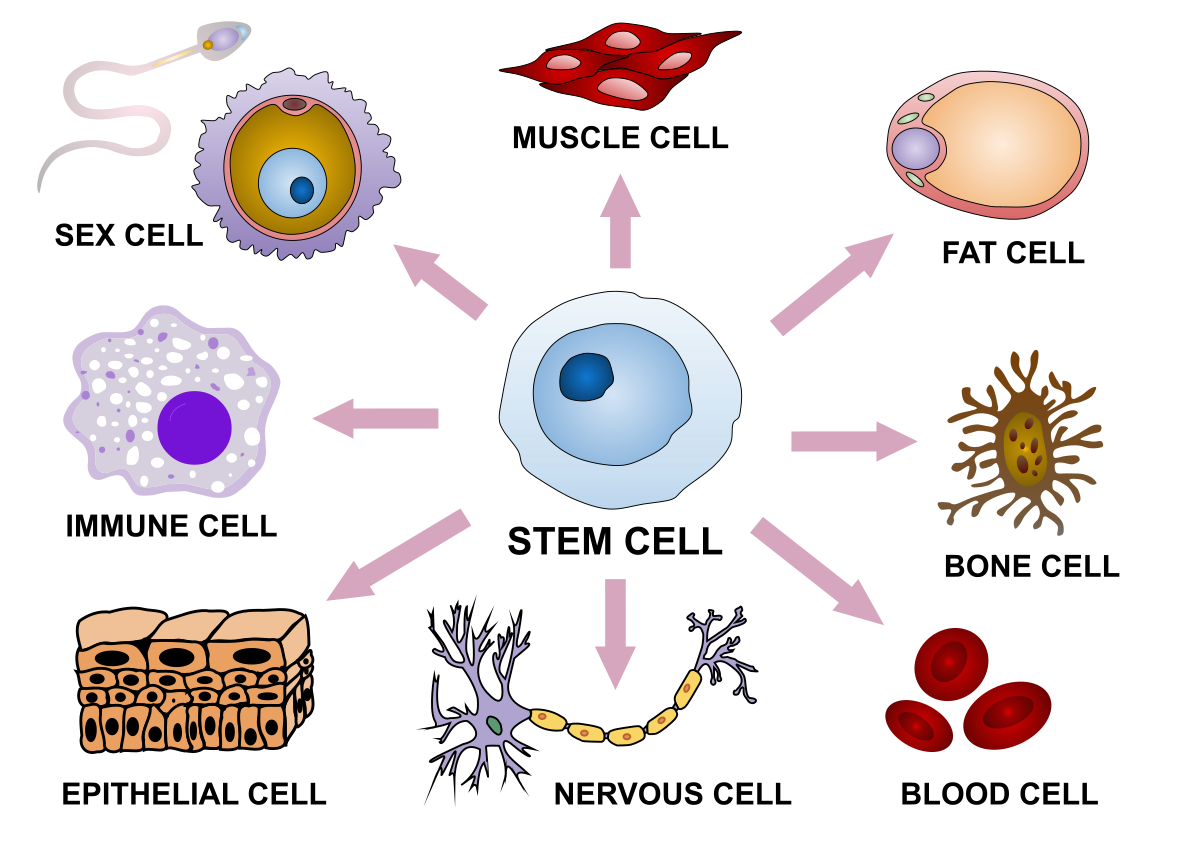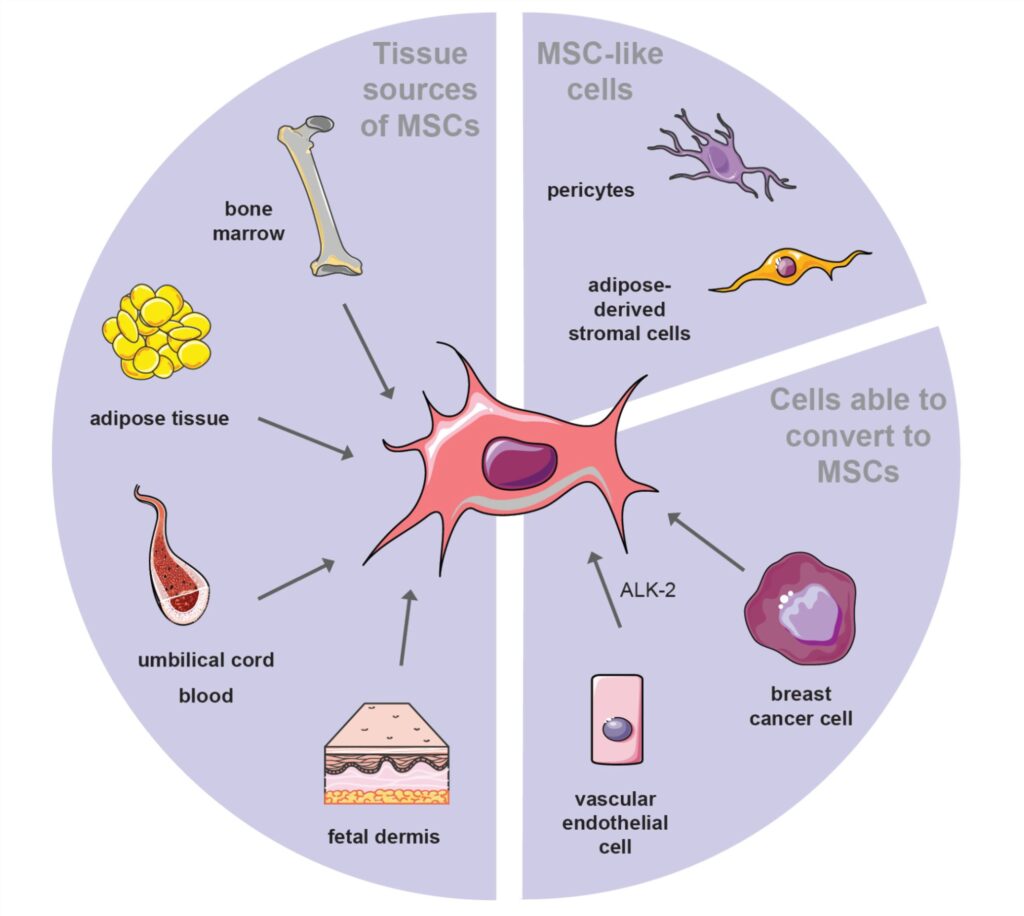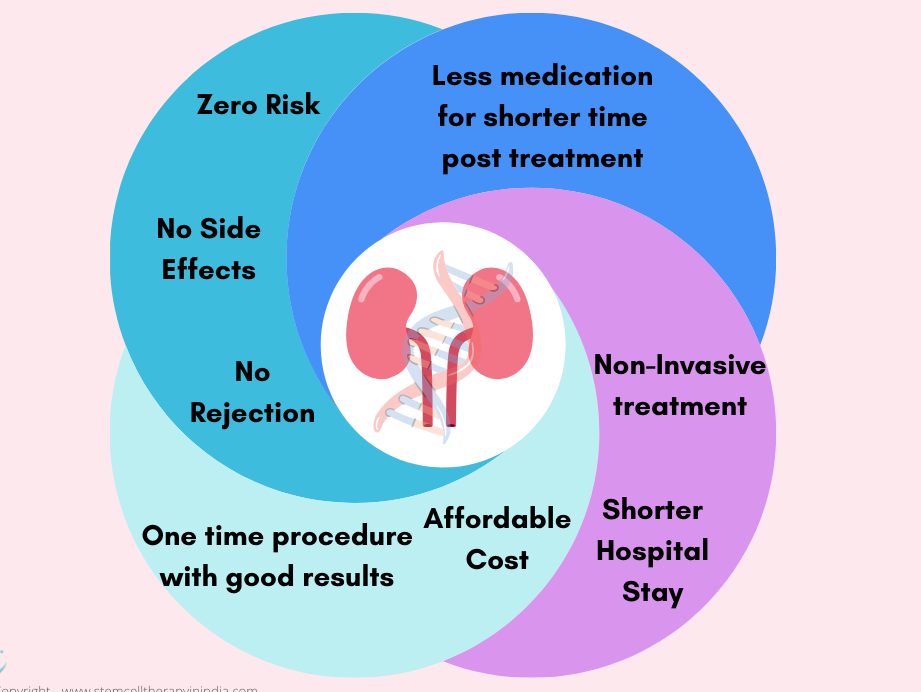Unlocking the Potential of Stem Cells
Stem cells have sparked a revolution in the medical field due to their remarkable ability to self-replicate and differentiate into other cell types. Essentially, these cells are the body’s raw materials, which under the right conditions, can transform into cells with specialized functions, such as kidney cells, heart muscle cells, or even brain cells. This unique characteristic makes them a potential game-changer in treating various diseases, including kidney diseases.
By harnessing the power of stem cells, scientists can potentially replace damaged cells with healthy ones. This breakthrough could lead to revolutionary treatments, especially for kidney diseases which currently have limited treatment options. Research has shown promising results where stem cells were used to restore kidney functions in trials.

For a deeper understanding of how stem cells work, the National Institute of Health provides comprehensive resources on stem cell basics and their potential in regenerative medicine.
The Future of Kidney Treatment
While we’re still in the early stages of stem cell therapy for kidney diseases, the potential is undeniable. The next step is to translate this potential into practical, effective treatments that can change millions of lives. The future of kidney treatment indeed looks promising with stem cell therapy.
Overcoming Current Challenges in Kidney Treatment
Effective management of kidney diseases is currently faced with significant challenges. Chief among these are the limitations of dialysis and transplant treatments. While dialysis can be a lifesaving treatment, its long-term use can lead to complications, such as cardiovascular diseases, anemia, and bone diseases. Moreover, the procedure can be burdensome, impacting the quality of life of patients.

In terms of kidney transplants, the demand far exceeds the available supply of donor organs. This has led to long waiting lists and a pressing need for alternative solutions. Furthermore, the risk of organ rejection and the necessity for lifelong immunosuppressive therapy pose additional hurdles.

Therefore, innovative and sustainable solutions are needed to address these challenges. Future prospects include the development of artificial kidneys and advancements in regenerative medicine.
The Revolutionary Promise of Stem Cells in Kidney Treatment
Stem cells harbor immense potential in the realm of kidney treatment. These unique cells can differentiate into various cell types and possess self-renewing capabilities. This gives them the unprecedented ability to repair damaged kidney tissue, lessening the need for aggressive treatments such as dialysis or transplantation. Studies have shown that stem cells can mitigate inflammation, a common culprit behind kidney damage. The anti-inflammatory properties of stem cells can, therefore, aid in preserving kidney function and slowing disease progression.

Moreover, the groundbreaking potential of stem cells extends beyond mere repair.
Scientists are exploring the possibility of using stem cells to generate new, functional kidney tissue. This could revolutionize kidney treatment, offering a more permanent solution to kidney diseases. Research in this field is still in its early stages, but the promise is undeniable. With further investigation, stem cell therapy could usher in a new era of kidney treatment.
Current Research and Clinical Trials: Stem Cell Therapy for Kidney Disease
As we delve deeper into the realm of stem cell therapy, we find that it’s increasingly being explored as a potential treatment for kidney disease. A number of experimental studies and clinical trials are underway, some of which are yielding promising results.
For instance, a clinical trial conducted by the University of Miami showed that mesenchymal stem cell (MSC) therapy could help reduce inflammation and fibrosis in kidneys, two key factors in kidney disease progression.
However, hurdles remain, particularly regarding the long-term effects and safety of stem cell therapy. Researchers are also grappling with challenges related to stem cell sourcing and delivery. These are significant issues that need resolution before we can fully realize the potential of stem cell therapy in revolutionizing kidney treatment.
Breakthroughs and Challenges in Stem Cell Therapy for Kidney Disease
Despite the challenges, the promise of stem cell therapy for kidney disease is undeniable. With more experimental studies and clinical trials, we can expect to have a clearer understanding of this promising form of treatment in the near future.
It’s essential to stay informed about the latest developments in this field. For more in-depth information, refer to the National Institute of Health website, which provides a wealth of information on ongoing research and clinical trials.
The Process of Stem Cell Therapy for Kidney Diseases
Stem cell therapy could be a game-changer in the treatment of kidney diseases. Let’s break down the process in a way that’s easy to understand. First, stem cells are harvested from the patient’s body or a suitable donor. Common sources are bone marrow or fat tissue. (source)

Next, these cells are transported to a laboratory where they are cultured. This means they’re nurtured and multiplied in a controlled environment. (source)

Finally, the cultured stem cells are injected back into the patient’s body, specifically into the damaged kidney tissues. The goal is for these cells to regenerate and repair the damaged tissues, improving kidney function. (source)
Stem cell therapy offers a revolutionary approach to kidney treatment by potentially correcting the underlying cause of kidney disease rather than merely alleviating symptoms.
Potential Risks and Ethical Concerns Surrounding Stem Cell Therapy
Stem cell therapy, while promising, also brings with it a host of potential risks and ethical questions. One of the key concerns is the risk of complications, such as rejection or uncontrolled growth, if the transplanted cells do not behave as expected (Mayo Clinic).
On the ethical front, controversies stem from the use of embryonic stem cells. These cells are often preferred due to their pluripotency but their extraction involves the destruction of an embryo, sparking ethical debates (NCBI).
Regulatory Landscape and the Need for Evidence-Based Practice
The FDA regulates stem cell products in the U.S, ensuring their safety and efficacy. It is crucial for stem cell therapies to be based on rigorous scientific evidence to validate their benefits and minimize risks.
Addressing Concerns for a Brighter Future
Despite these concerns, the potential of stem cell therapy in revolutionizing kidney treatment is immense. By addressing these issues and putting in place stringent safeguards, we can move towards a future where kidney diseases are not as debilitating as they are today.
The Future of Kidney Treatment: A Stem Cell Perspective
As we gaze into the future of kidney treatment, the potential for stem cell therapies is limitless. This revolutionary approach could dramatically improve patient quality of life by offering a more efficient, less invasive treatment option. This could mean fewer dialysis sessions, less pain, and more freedom for patients.
From a healthcare economics standpoint, stem cell therapies could potentially reduce costs by minimizing the need for long-term dialysis and decreasing hospitalization rates. This, in turn, could significantly alleviate the burden on healthcare systems.
Furthermore, the advent of stem cell therapies could revolutionize the field of organ donation. By harnessing the regenerative power of stem cells, we could reduce or even eliminate the need for organ transplants, thus addressing the critical issue of organ shortage.

Conclusion: The Promising Horizon of Stem Cell Therapy in Kidney Treatment
Groundbreaking research in the field of regenerative medicine has unveiled the enormous potential of stem cell therapy to transform the landscape of kidney treatment. This novel approach holds the promise of not only managing but potentially reversing kidney damage, ushering in a new era of therapeutic interventions.
Yet, this revolutionary treatment is still in its infancy, and much remains to be understood. Rigorous studies are needed to elucidate the mechanisms underlying stem cell-based kidney repair and to overcome existing challenges. This includes optimizing the delivery methods, enhancing the survival of transplanted cells, and minimizing potential risks.
As we stand on the precipice of this exciting new frontier, it is crucial that we continue to support and invest in scientific research, fostering an environment that enables discovery and innovation. With continued exploration, the full potential of stem cell therapy in kidney treatment can be realized, offering hope to millions suffering from kidney diseases worldwide.

